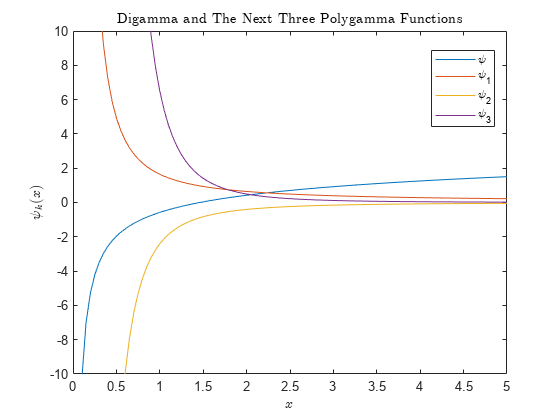psi
Digamma and polygamma functions
Syntax
Description
Y = psi(X)X, which must be real and nonnegative.
Y = psi(k,X)X, which is the kth derivative of the digamma
function at X. Thus, psi(0,X) is the digamma function,
psi(1,X) is the trigamma function, psi(2,X) is the
tetragamma function, and so on.
Examples
Input Arguments
More About
References
[1] Abramowitz, M. and I. A. Stegun, Handbook of Mathematical Functions, Dover Publications, 1965, Sections 6.3 and 6.4.
Extended Capabilities
Version History
Introduced before R2006a

